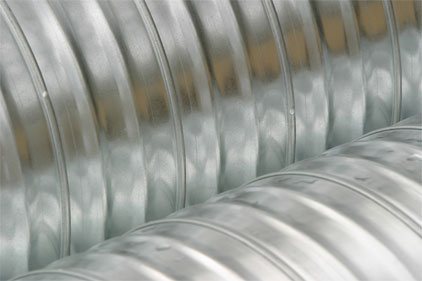There are many myths about how sheet metal shops can improve. Many of these are built on the faulty assumption that contractors want shop efficiency. Most don’t. They want shop productivity, which is not the same as shop efficiency. It is more than just definition differences; it is about understanding the basic differences of how to run operations.
This article discusses ideas and topics including:
Efficiency is the rate of using resources. Productivity is the rate of producing something (output) compared with the resources consumed. It could be defined as effectiveness divided by efficiency.
You always need to look at the productivity of the whole shop and field workers, not just a single operation. If one operation is more efficient at the expense of others, the total is usually less productive.
“Lean thinking” looks to reduce waste out of processes such as duct fabrication. Being efficient in part of the fabrication process can lead to additional waste elsewhere.
Here are some basic myths of shop efficiency:
Faster is better
Equipment sales staff and some fabrication experts push the idea that if you buy a newer and faster machine you will make more money. For example, one person suggested that replacing a 300-inch-per-minute plasma cutter with a 3,000-inch-per-minute laser cutting machine would create a huge increase in metal-cutting efficiency.
The statement is absolutely true, but shop productivity is not just about metal-cutting efficiency. It is about getting duct through the entire process. A machine may cut faster, but if all it does is pile up metal waiting for the next tool, it will not increase productivity. You may be better off using the slower - and already paid for - machine. Faster is not necessarily better.
Maintain high utilization on the most expensive machine
One shop would run its plasma cutter to near 100 percent capacity to justify its expensive tool. High utilization seemed to be the most efficient operating mode. The reality was that the high use caused jobs to pile up on all the available tables while waiting to move to the next operation.
This would max out the available tables and no work would move until the jobs were processed. This shop found out that using the plasma cutter at a lower rate to match the ability of the rest of the shop was actually more productive.
More space is better
Shop workers often feel they lack space and need a bigger facility. While more space may give the appearance of more productivity, it usually works in reverse. No value is added to the metal when being transported to another station. This is waste and when the distance increases between machines, the waste also increases.
In some of the most efficient shops, working areas are tight. They meet all safety requirements for working space, but little more. This actually caused them to have minimum travel time and distance between machines and made them more productive.
Reduce trips to the field by tightly stacking duct
Many contractors want to save fuel and travel time to jobsites, so the workers loading the duct cram as much as possible into the trailers or delivery trucks. However, stacking the duct too tight often results in damaged materials. This must either be returned for repair or causes the installation crews to fix it in the field. Either way, such work is waste and costly.
One contractor developed a set of bands to hold the duct in place so it would not knock into other pieces. Sometimes this loading approach resulted in more trips to deliver the product, but less rework easily paid for it. Shops know how much work is returned to them, but few contractors know the amount of work done in the field due to damaged product. Pack it right, not tight.
Run jobs in batches
The conventional way of fabricating duct is to do every job as a batch, causing lots of duct to wait at each process step. For example, one shop fabricating spiral duct fittings produced a set of fittings through each step as a batch. While the worker was using the machine on one fitting, the rest sat waiting on the floor. Waiting is waste. There was much wasted energy picking up and setting down each fitting at each machine. A better method is to flow each piece or fitting through the shop and not in batches.
Keep the shop working
Shop fabrication is never constant. There are always peaks and valleys. Typically what happens during a low time is that shop supervision will start fabrication jobs that have need dates well over a week away. While this may keep the workers in the shop, it has many negative effects.
Change orders may cause the completed duct to be wrong, resulting in wasted material and labor. Even if the customer ends up paying for the change, it is still wasted effort. Once a job is fabricated, the shop never has room to store it, so often the duct is sent to the jobsite early. This disrupts the field crew’s current work and requires double handling of material - more waste.
Shop supervisors think they’re doing the company a favor by fabricating work early and keeping their hands productive, when they’re really adding more waste to the operations. The myth is that the field work serves the shops’ needs, when in fact the shop should only fabricate as needed in the field.
Some of these myths have been used for many years and are passed on from supervisor to supervisor. It takes a better understanding of operations to see that what may appear to be good for the shop is really not good for it or the company. Faster is not better; high utilization in isolation is not more productive. More space is not the answer, less trips to the field may not save time and fabricating too early is not a good idea.
Avoid the myths and be smart - and productive.










